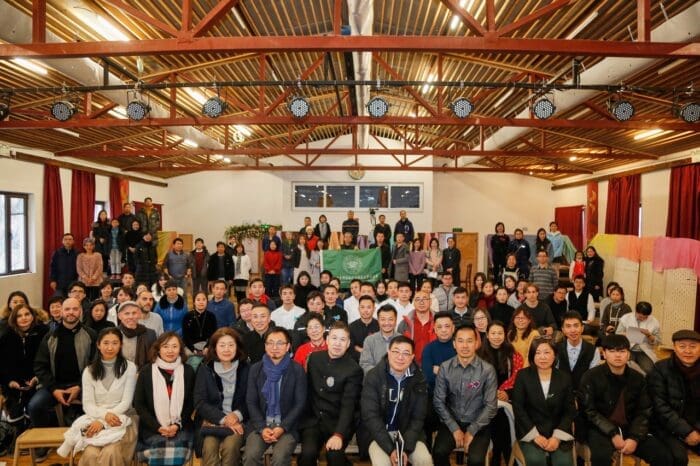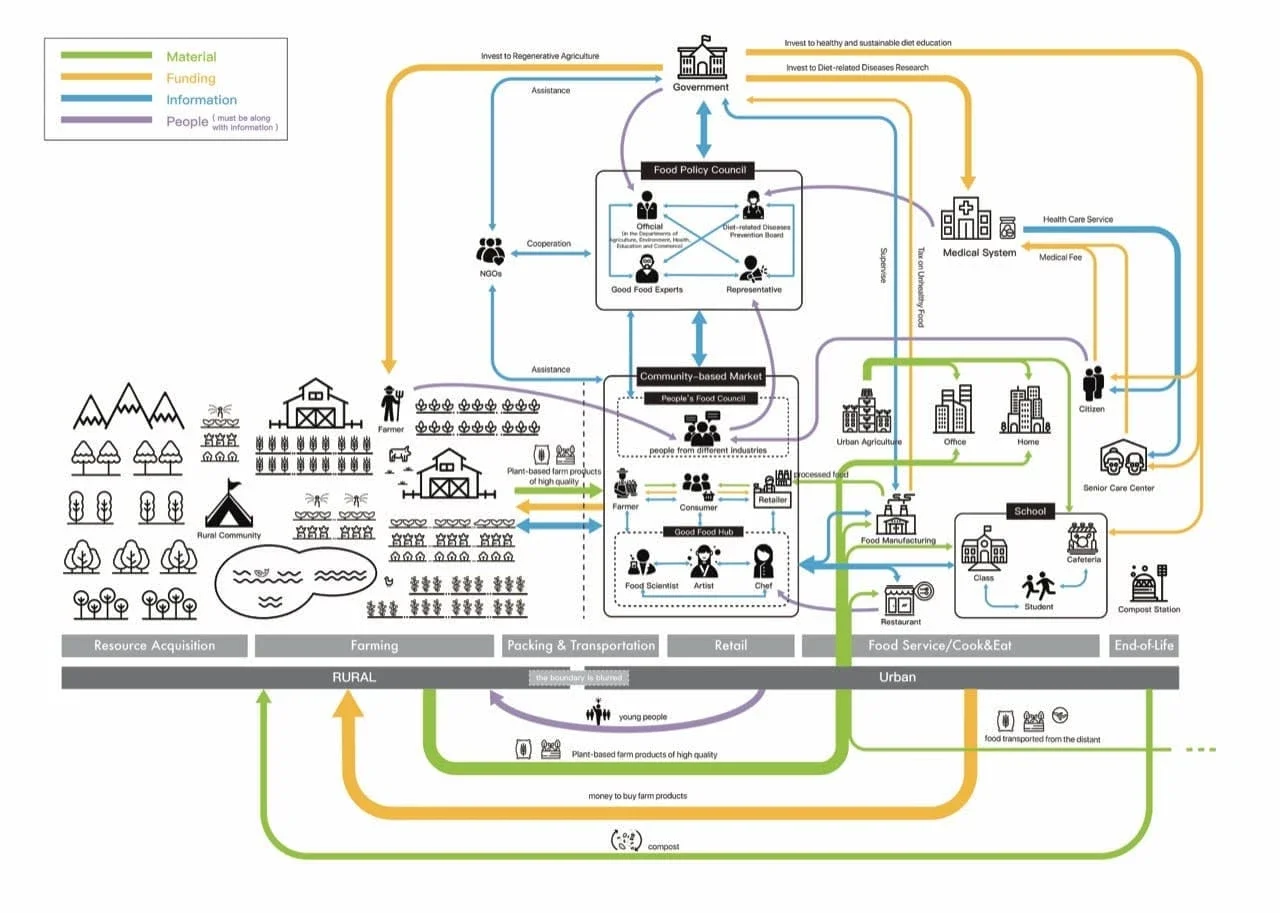Home to the largest population in the world, China is seeing a rise in new health challenges caused by widespread industrialization; rapid urbanization; an aging population; a shift toward a more Westernized, highly processed diet; and environmental changes caused by the climate crisis. Currently, like many cities around the world, few if any Chinese cities have well-integrated food governance policies, resulting in fragmented management and monitoring of various food value chains.
Beijing is home to 20 million people, and the country’s health challenges are intensified within the capital city. Production and consumption of animal protein has skyrocketed; zoonotic diseases are on the rise; and the obesity rate is more than double the national average.
Yet with this Vision for 2050, positive change is on the horizon. The goal is to shift the majority of the population toward a plant-based diet, and educating communities on nutrition and their role in transforming the food system is critical. Other key components of the Vision include: launching “Good Food Hubs,” a trusted community resource to learn more about plant-based cooking; using custom mobile apps to educate the communities about plant-based diets; creating new governance mechanisms for shared understanding and adoption of new food policies; and making plant-based ingredients easily accessible.
This Vision for Beijing showcases how by the year 2050:
- Farmers, scientists, and chefs work together to increase the diversity of foods produced and consumed daily, shifting toward better dietary quality for all.
- Community-based markets are entirely plant-based, eliminating animal products and minimizing risks for zoonotic diseases.
- Good Food Hubs exist within every community-based market, becoming the city’s food oases and ensuring that no food deserts exist. Good Food Hubs, as well-known, well-utilized resources, offer:
- Labs, where professional chefs and community members introduce traditional recipes and create new ones with a wide range of plant-based ingredients produced mainly by local or regional sustainable farms.
- Community Kitchens, where sustainable agricultural products are presented and offered in the form of tasty and healthy meals for local residents to sample.
- Studios, where professional chefs and community members interact with artists and designers in creating intriguing online and onsite events about food system transformation.
- Classrooms, where young chefs and community members learn new skills and contribute ideas to the evolving food revolution.
- Archives, where traditional and innovative plant-based recipes are collected, documented, and made available for everyone in the city and beyond.
- Food and traditional medicine align again and are considered in harmony. Chinese medicine informs and enriches the food choices, revitalizing the ancient medical wisdom that focuses on “One Health” and restoring the “Tao” way of life (doing the right thing).
This Vision highlights how food can support human health, nourish minds and build communities.

As a team under the Good Food Fund of the China Biodiversity Conservation and Green Development Foundation, and in partnership with Tianren Culture and Slow Food Greater China, the Good Food Fund aims to facilitate shifts in food production, distribution, and consumption patterns towards a healthier and more sustainable food system.
Click here to explore the full Vision for Beijing in the year 2050.
Our generation will set the new default in our kitchen, so that our children grow up eating healthy and sustainable food. It is time that China – which is now the world's second largest economy and largest consumer and producer of food – thinks about what example we can make for other parts of the world by eating well.
